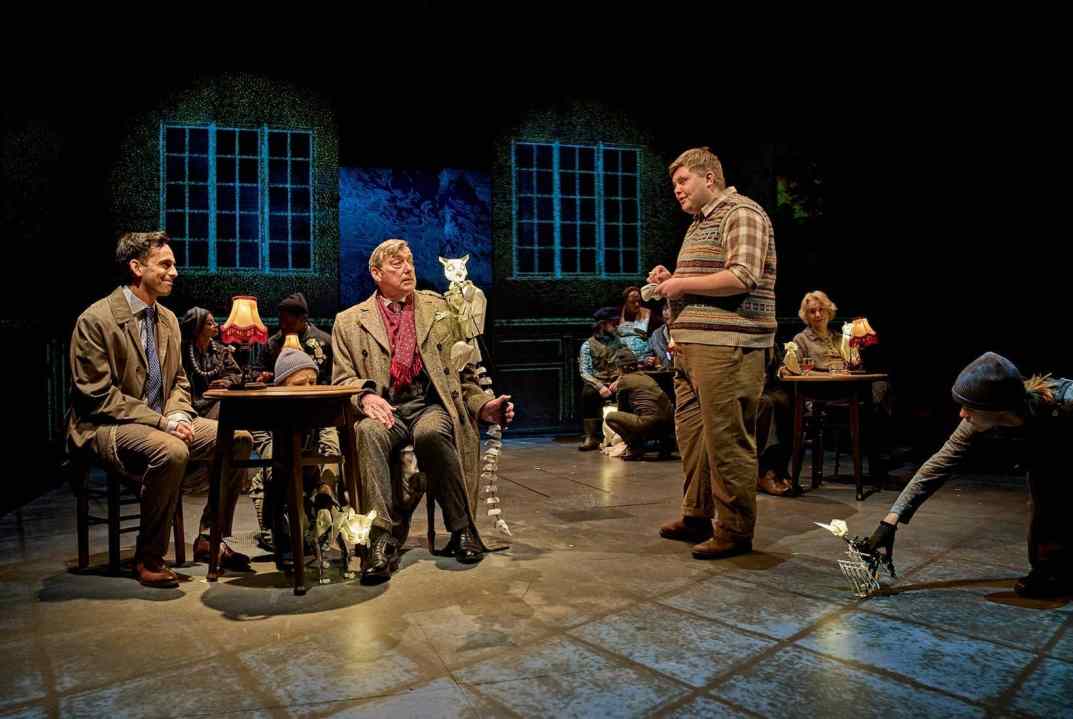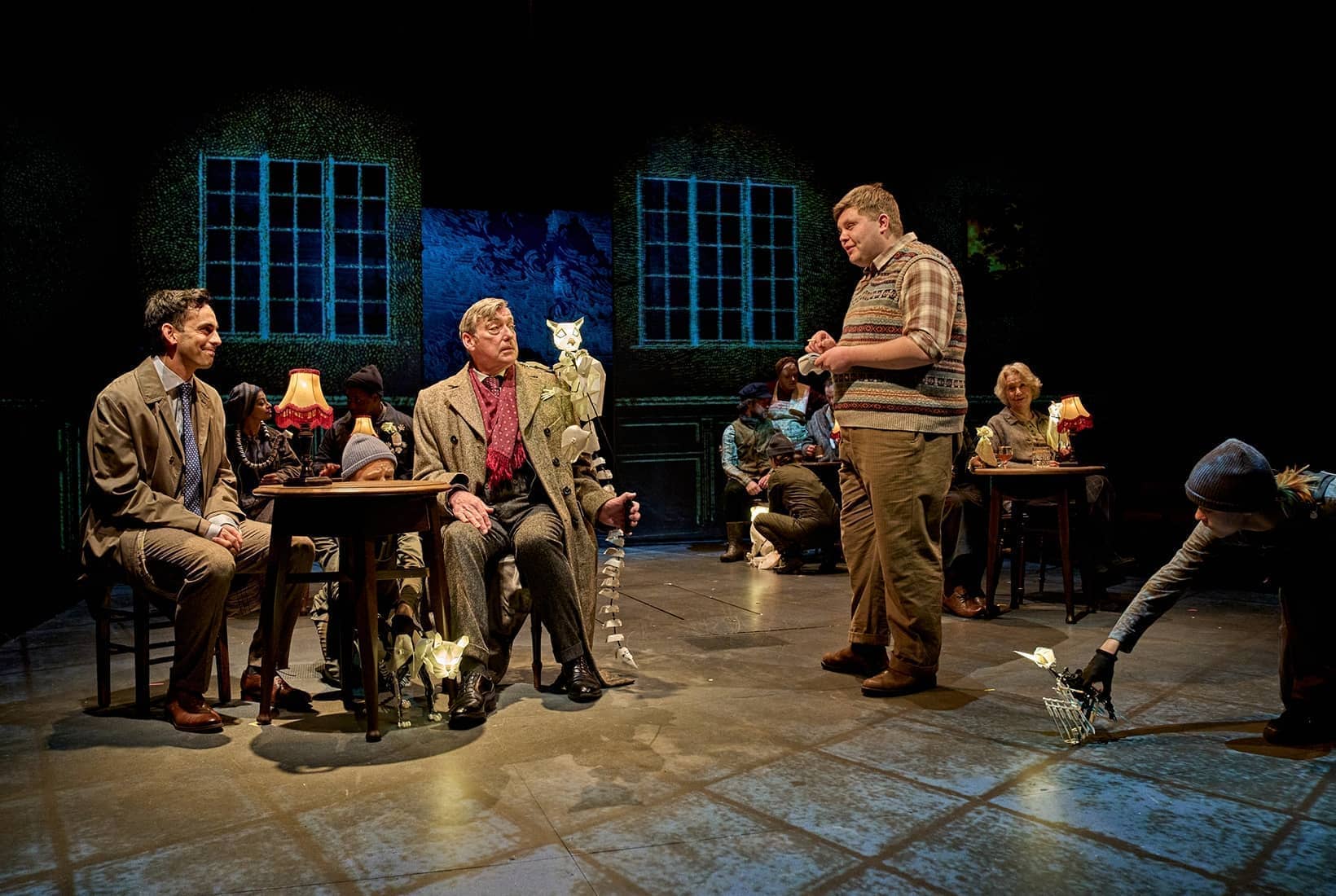Philip Pullman’s The Book of Dust has been adapted at the Bridge. The yarn is set in Oxford, and the surrounding countryside, and the whole of the first act is devoted to exposition because Pullman’s fantasy world is impenetrably complicated. The chief character, a dim-witted child, wanders around the place and listens while terms like ‘magisterium’, ‘alethiometer’ and ‘daemon’ are explained to him. Meanwhile we’re introduced to Pullman’s range of human personalities. He can do two: first, the ooh-arr yokel who is thick but kind, and secondly, the posh academic who is clever but evil. These archetypes give rise to a total of 32 characters who are represented by 16 actors.
A lot of simplification was needed here. None was effected. The central storyline surrounds the abduction of a screaming infant called Lyra. Another plot involves a power struggle between religious elders. A third strand is set in a boarding school which is so old-fashioned that none of the pupils are transgender. A fourth story takes place at a priory whose priors have been ousted by an invasion of fat, prattling nuns dressed in bedsheets. And intermittently we meet an upper-class rapist, called Gerard, who has recently left jail and seems hellbent on sexually abusing an angry teenage babysitter. That’s the plot.
This show would go down well at a prison for illiterates convicted of kidnap, wife-beating or torture
The atmosphere of the script is artless, crude and persistently thuggish. The dialogue brims with feeble polemic and the characters utter banal insults like ‘thicko’, ‘moron’ and ‘scumbag’ which an EastEnders script editor would delete. Few scenes are free of bullying or violence. Someone is always getting their head kicked in. This show would go down well at a prison for illiterates convicted of kidnap, wife-beating or torture.
The many locations of the book are suggested by colourful imagery projected on to ranks of flats that recede to the rear wall. The resulting 3D effect is impressive. But, at the same time, it looks like a cut-price movie version directed by someone who can’t be bothered to make an actual film. The trickiest element of the show is the presence of ‘daemons’, or pet-ghosts, which accompany every character on stage. Might a wise producer have decided to ditch these appendages? Instead a puppeteer, Barnaby Dixon, was hired and given a rather modest budget. He seems to have gone to Poundstretcher and the results are quite amusing. There’s a woodpecker made from shuttlecocks, a King Charles spaniel fashioned out of blank business cards, a stag beetle whose wings are drinking straws, and a pit bull suggested by rolls of kitchen tissue. But spare a thought for the poor old actors who have to wear these clip-on origami jobs throughout the run. It’s worse than the Nativity play where every character, including Baby Jesus, wore a halo made from a doughnut.
James Graham’s new play at the Young Vic looks at a famous TV joust between Gore Vidal and William F. Buckley Jr. The script is set just ahead of the presidential election in 1968 and it pitches the good-natured, liberal-minded Vidal against the aggressive and dictatorial Buckley. (It’s not hard to know who you’re supposed to support.) Vidal wins, of course, and Buckley embarrasses himself by denouncing his opponent as a ‘queer’ at the climactic moment.
Yet the explosion fails to detonate properly because David Harewood, a black actor, has been cast as Buckley. This confuses the cultural polarities that the script sets out to dramatise. The play is about a turning point in the 20th century when a rich and conservative elite was being challenged by a coalition of gay and female activists supported by people of colour. This show asks us to believe that at that very moment, the black community might have produced a wealthy, well-educated far-right advocate who supported the oppressors. It obscures rather than illuminates the central issue. Theatre is all about imitation, after all, and the closer the resemblance the better the result. The designers know this and their work accurately depicts the clothes, hairstyles, TV equipment and other visual details of the period. But parachuting a black actor into a white role damages the attempt at authenticity. David Harewood excels at playing generals and men of action but he can’t find the hard heart of the cerebral and superior Buckley. Charles Edwards does better as Vidal and turns him into a lofty, chuckling confection. Neither character is easy to like and their rapid-fire dialogue is little more than snarky one-upmanship.
Syrus Lowe, as the novelist James Baldwin, has a good claim to be the show’s star. He captures Baldwin’s beguiling and slightly needling voice, his smirking sideways glances and his camp, off-kilter gait. Baldwin is never anywhere. He’s always just about to leave. Despite the eccentric casting this a terrific piece of entertainment. And it’s more than just a face-off between two supercilious wags, it offers a valuable history lesson too.








Comments